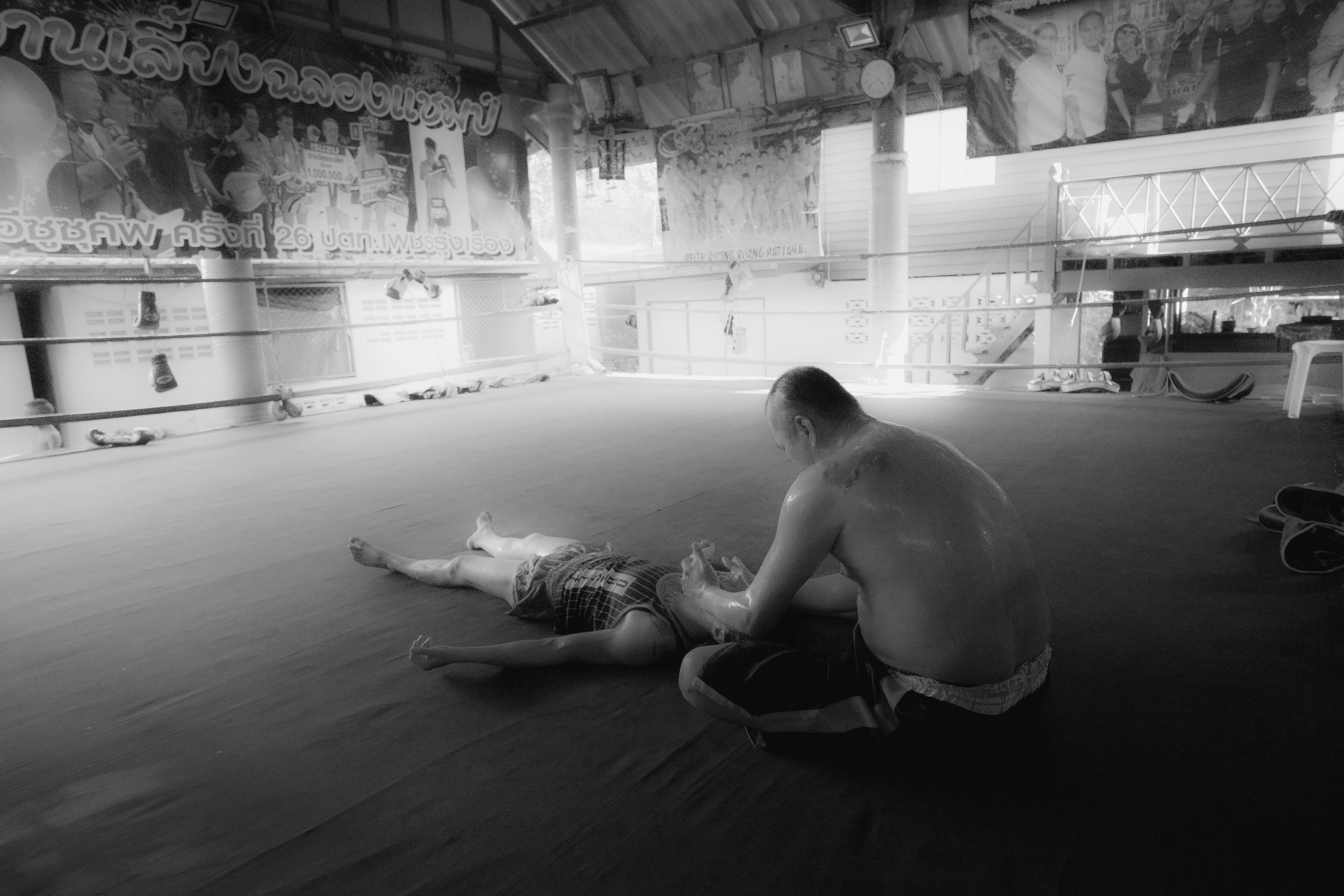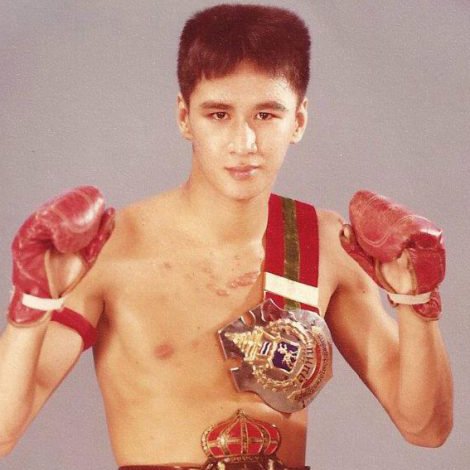-
Posts
2,264 -
Joined
-
Days Won
499
Everything posted by Kevin von Duuglas-Ittu
-
Yeah, white guys like you and me are privileged. We can coast through lots of situations and not have to think extra "negative" thoughts because we have a passport to get through all kinds of things that others don't. It's a luxury. The first step, at least for me, is realizing that yeah, I'm privileged, and other people in the same space don't experience it quite so smoothly as I do. If these people bring up certain problems that would never occur to me I take a step back and don't immediately say "Hey, you are being negative" or "why you looking for all that stuff". Sylvie tells a great story about how she wasn't able to clinch train in the main ring of her gym in Chiang Mai. It was the "man's ring", women were not allowed to enter it. It's where almost all the heavy clinch was done, and the hard sparring. Muppets were getting pretty high level clinch work, western guys who were not even fighters, while Sylvie (who was actually a clinch fighter with maybe at the time 50 or 70 fights) was getting almost no clinch work. It wasn't on purpose. It wasn't nasty, it's just the way it shook out. All the guys would just climb in and clinch. They hadn't a clue that Sylvie couldn't go in there. Occasionally a guy would say "Hey Sylvie, why don't you come in and clinch". They had a passport, one they completely took for granted. It wouldn't even cross their mind that you actually needed a passport (a penis, really) to clinch. But you kind of did. These kinds of invisible barriers are everywhere, often in much more subtle ways. Just because the barriers don't affect you or me doesn't mean that people who are stopped or slowed by them are being negative by calling attention to them. Sylvie didn't make a stink about that ring. But she suffered under it and its prohibition for a long time. She finally just left the gym and found a gym where women can clinch with males in a single ring and get all the real work. The same thing goes on with power dynamics and how instruction or information is passed between individuals. The tendency to "mansplain", broadly speaking, is really not much different than a bunch of western dudes climbing into the men's only ring to clinch. It isn't something special they are doing. That's just how one talks. It isn't something that feels privileged, it would never occur to them that you have to be a special type to do this. If you aren't clinching in the ring - as Sylvie wasn't in that ring - it must be that that's just not what you want to do. At least for me these are really important distinctions.
-
farang, for sure. I guess we go to different gyms. It's definitely a type we have run into again and again. I'm not sure if @LengLeng is talking about this type, but I just wanted to throw it out there that this does occur in Thailand, as people have been mentioning western gym contexts. Hmmm. No, mansplaining is just an air of authority men are raised to take on and feel comfortable with (especially online, where social cues are minimal). It's a pattern of talk that, very broadly speaking, women are much less comfortable with. It's the assumption "I know more than you likely know" as a way of entering communication. Happens all the time. Raised as a man I definitely have been cursed/blessed with it. You don't have to really look for it, like a rare rabbit in the woods, it is pretty much everywhere. Sylvie gets it all the time when people first come to the gym and imagine that they are super experienced when compared to her.
-
Men "Mansplain" to other men all the time. In fact that is how they develop the habit. In fact, I just did it. To offer the other side of it, this is really common in Thailand, and not because there are 40 people in a class. Sylvie calls it "Sensei-ism". Usually or often older, or long term people in the gym who themselves don't work very hard, maybe they've been coming for many years, off and on, and one of the biggest pleasures is trying to convey how much "knowledge" they have. Happens all the time.
-
I think this is why, often in real, long term training gyms that raise Thai boys up there is very little correction. And, why, you don't get everyone on the gym doing the same motions, having the same muay. Growing young fighters tend to be more nudged towards better technique, rather than "corrected", especially not repeatedly. And emulation becomes a strong tool of honing techniques, rather than teacher direction. This may be related to the guest post I wrote for Sylvie's blog: Precision – A Basic Motivation Mistake in Some Western Training
-
What I find really fascinating about the General's Muay Lertrit, from the Muay Thai perspective, is that it adds an entirely distinct and new vocabulary of strikes to an already pretty potent vocabulary in Ring Muay Thai. The truth of the matter is that ring Muay Thai, even at its best - and I consider it the best fighting art in the world in the hands of the Thais - still becomes cul-de-sac'd by aesthetics over time. You have John Wayne Parr chain punching elite fighters into submission, perhaps not because he was better than them (if you want to invent a criteria), but because he fought off- or out-of rhythm, pushing them into the deep zone. All fighting arts become aesthetisized. Ring Muay Thai is no different. The aesthetic does become refreshed because fighters are always looking for "what works", but still there are era-specific channels through which it all flows. What is really cool about Muay Lertrit from this perspective is that one discovers not one, not three, but an entire family of strikes and defenses that can operate withing ring Muay Thai, because they are ancestrally related. They fit within the fighting program of Muay Thai, because they are evolutionarily related. It's like you suddenly discovered all the Anglo-Saxon derived words of English, after becoming proficient at the Latinate words which predominate because of Style - a rough analogy admittedly. The Muay Lertrit strikes, aside from the deeper, perhaps much more meaningful elements of balance, breathing and movement, seem to fall into certain holes or blindspots in modern Muay Thai.
-
This post cannot be displayed because it is in a password protected forum. Enter Password
-
I know you've tried a million things, so just another one to throw out there. This is for shoulder injury, and has really worked for Sylvie, but if its theory is correct it might help across all neck and back issues (the idea is that we are built to hang and swing): Hanging Theory. The good thing about it is that it is only a couple of minutes a day and is pretty basic (no learning curve). Other things we've tried is blue light filter glasses on sundown (it's a bitch to remember to do this) to get the sleep cycle started, and Sylvie's got some very good sleep mask thing that kept being advertised on Facebook, locking out light. Sorry if these were discussed above, just popping into the discussion.
-
Hiding strikes, yeah, but I know of no inside fighting style in any sport that feints much in inside fighting. Most of it is just defending well, intercepting, countering hard. Think of inside fighting in boxing. Zero feints. Unless maybe the deep rolls of inside boxing might be considered feints? Is there a lot of feinting in Muay Lertrit? By feint do you mean the twists and recoveries?
-
Just adjust and use his elbow strikes to the thigh to interrupt, right? hahaha. Yes, if you just take kicks to the arms all day, you lose. But that isn't really the Muay Lertrit style, it's invading of space more. Kickers will be okay for the first 2 rounds, but by round 3 and 4 their kicks will start to fall, pretty soon they'll all be below the waist and hesitant, leading to great narrative for you. Powerful weapons that degrade over time in a fight are a big negative. At least this is what Sylvie's encountered with her own pressuring style versus kickers. She blocks a few head kicks early (which score), but by the end of the fight the kicks are dead. Yeah, it's just fighting with the Muay Khao ethic (minus the clinch). There is a recipe for Muay Khao fighting vs Muay Femeu. Every judge knows it. You have to just follow that recipe I think, for Muay Lertrit inspired action. What is really interesting about Muay Lertrit, as far as I've been able to witness, is that the entire fighting style is organized around invading the no-mans-land between fighters, and fighting there. Even Muay Khao fighters sometimes ignore this zone, rushing in for the clinch. This is, in some Muay Thai, a neglected area of attack and defense, and for that reason your opponent is probably uncomfortable in this zone. We don't have the time, but I really would love for Sylvie to develop these twisting, intercepting no-mans-land habits and techniques. As a clinch fighter, if one became fluent in them, it would make you kind of undefeatable.
-
This post cannot be displayed because it is in a password protected forum. Enter Password
-
Why would you think that his Muay Lertrit would score lightly in Thailand's sport Muay Thai? It seems the opposite. It seems like fighting in the pocket with a very strong defensive core would ensure not only entertaining (action-oriented) fighting, but due to it's strong defensive principles would shut out the opponent's scoring opportunities. I think the bread and butter of Thailand's Muay Thai, the mid-kick, would not last very long vs the General (ideally speaking). It really reads like Muay Khao fighting, but without knees, like as you say, maybe how Yodkhunpon or maybe Samson Isaan fought in terms of temp and spacing. Just with interceptive defensive pressure. It seems like it would score well vs contemporary Muay Thai.
-
This post cannot be displayed because it is in a password protected forum. Enter Password
-
Yet, in the play, is also the countervailing imagery of being willing to be split right down the middle of your dichotomies. In the German the word used, here translated as "head", is more precisely akin to "part". Present the part in your hair, or the place you are split in two, to the heavens. Standing firm, by allowing oneself to be split asunder. This is the exposure that the female fighter ventures, I believe, exposing within themselves the halves of humanity.
- 9 replies
-
- 1
-
-
- female fighter
- archetype
-
(and 1 more)
Tagged with:
-
This post cannot be displayed because it is in a password protected forum. Enter Password
Footer title
This content can be configured within your theme settings in your ACP. You can add any HTML including images, paragraphs and lists.
Footer title
This content can be configured within your theme settings in your ACP. You can add any HTML including images, paragraphs and lists.
Footer title
This content can be configured within your theme settings in your ACP. You can add any HTML including images, paragraphs and lists.





